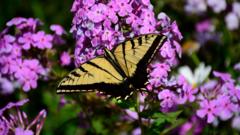Research indicates that butterfly populations in the US dropped by 22% between 2000 and 2020, with many species facing severe decline due to habitat loss and climate change. Conservation efforts could aid in their recovery.
Alarming Decline: US Butterfly Populations Plummet by Over 20% in Two Decades

Alarming Decline: US Butterfly Populations Plummet by Over 20% in Two Decades
A new study reveals that butterfly populations in the United States have decreased significantly, with severe implications for ecosystems and agriculture.
Butterflies across the United States are facing a troubling decline, with populations decreasing by more than a fifth over the last two decades. A recent study conducted by Binghamton University in New York highlights a 22% loss in butterfly numbers from 2000 to 2020, indicating a serious environmental concern.
The comprehensive research analyzed data from 12.6 million butterfly sightings across 76,000 surveys, aggregated over 35 different monitoring programs. The study revealed that one-third of the species surveyed experienced substantial declines, with certain species, like Julia's Skipper, suffering losses exceeding 90%.
The research utilized statistical models to estimate population trends for 342 butterfly species, yielding alarming results: 33% demonstrated considerable declines, and 107 species saw their populations decrease by more than 50%. “While the results aligned with global trends, seeing the extent of the decline at such a large spatial scale was sobering,” commented Prof Eliza Grames from Binghamton University.
Among the most impacted butterflies are the Florida white, Hermes copper, tailed orange, Mitchell's satyr, and West Virginia white, all of which have experienced an abundance reduction of more than 98%. The once-common West Coast lady butterfly has declined by 80%, underscoring the vulnerability even of adaptable species, prompting researchers to express concern.
The driving factors behind these declines include habitat loss, pesticide use, and the impacts of climate change, according to the researchers. Butterflies play a key role as pollinators, vital for supporting both plant and crop life. Their declining numbers not only threaten these ecosystems but also serve as a harbinger for the health of other species.
The Southwest region of the US has been particularly hard hit, as it grapples with extreme drought conditions that adversely affect butterfly populations and their food sources. “Drought is a double threat - it harms butterflies directly and also affects their food and host plants,” explained Prof Grames, highlighting the intertwined nature of these environmental issues.
Despite the grim findings, researchers hold onto a glimmer of hope for recovery. Butterflies can bounce back quickly due to their short generation times, and they urge individuals to take small steps, such as planting wildflowers, reducing pesticide application, and leaving parts of their backyards unmowed. Prof Grames emphasized the necessity for broader governmental interventions, noting, “Insects are fundamental to life on earth, and we need conservation actions and policies that support insects.”
The study not only points to the urgent need for conservation but also emphasizes the role of butterflies as key indicators of environmental health, illustrating the intricate balance of our ecosystems and the potential consequences of losing such vital species.





















